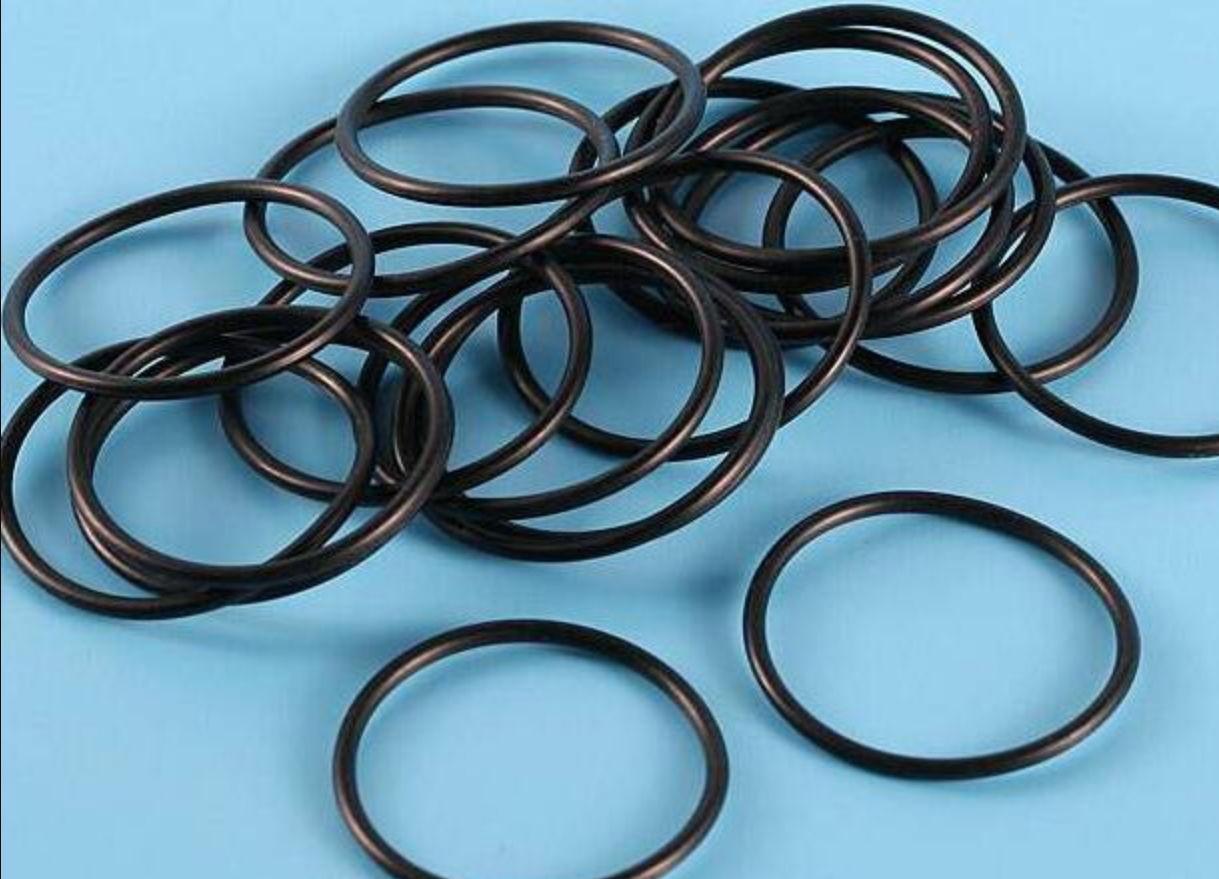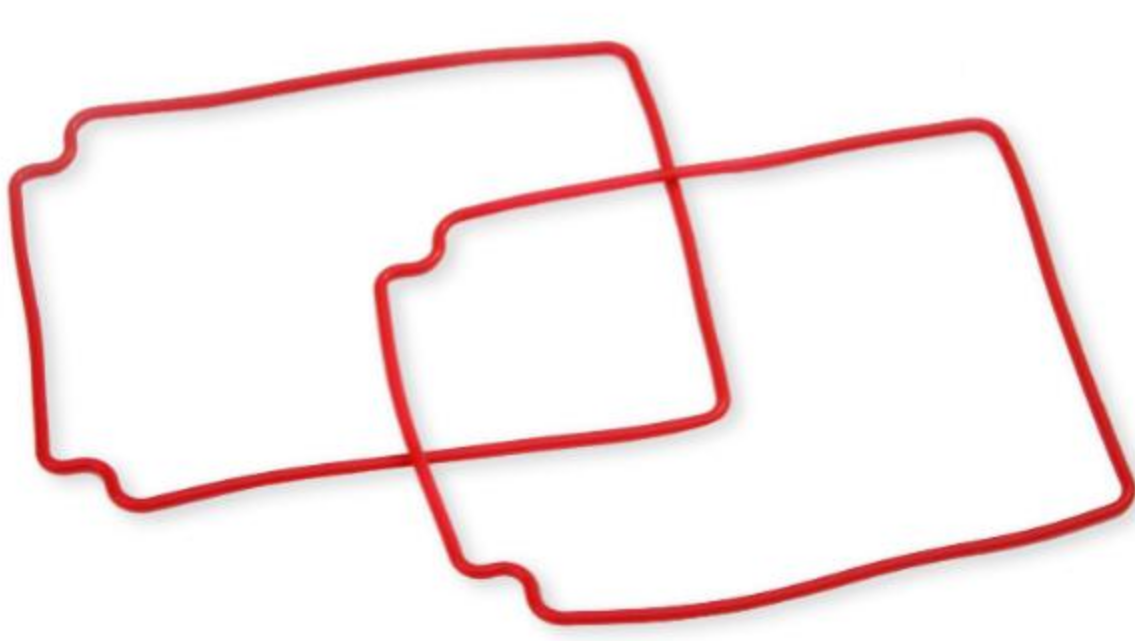Welcome to the company's official website
- Website Map
- Contact Us
- WeChat

Welcome to the company's official website

免费咨询热线
13244722122O-ring, also known as O-ring, is a rubber ring with a circular cross-section. O-ring seal is the most widely used type of seal in hydraulic and pneumatic systems. O-ring has good sealing performance, which can be used for both static sealing and reciprocating motion sealing; Not only can it be used alone, but it is also a fundamental component in many combination sealing devices. It has a wide range of applications. If the materials are selected properly, it can meet the requirements of various motion conditions, and the working pressure can range from a vacuum of 1.333 × 105Pa to a high pressure of 400MPa; The temperature range can range from -60 ℃ to 200 ℃.
Compared with other sealing types, the 0-shaped sealing ring has the following characteristics:
1) Small structural size, easy to assemble and disassemble.
2) Both static and dynamic seals can be used, and there is almost no leakage when used as a static seal.
3) Using a single 0-shaped sealing ring, it has a bi-directional sealing effect.
4) The dynamic friction resistance is relatively small.
5) Low price.

The O-ring seal is an extrusion type seal, and the basic working principle of the extrusion type seal is to rely on the elastic deformation of the sealing element to create contact pressure on the sealing contact surface. If the contact pressure is greater than the internal pressure of the sealed medium, no leakage occurs; otherwise, leakage occurs. When used for static sealing and dynamic sealing, the reasons and calculation methods for the contact pressure on the sealing contact surface are not the same, and they need to be explained separately.
1. Sealing principle for static sealing
O-ring is the most widely used in static sealing. If designed and used correctly, O-ring seals can achieve leak free sealing in static sealing.
After the O-ring is installed in the sealing groove, its cross-section undergoes elastic deformation due to contact compression stress. Generate a certain initial contact pressure Po on the contact surface. Even if there is no medium pressure or the pressure is very small, the O-ring seal can still achieve sealing through its own elastic force; When a pressurized medium is filled into the chamber, under the action of medium pressure, the O-ring shifts towards the low-pressure side, and its elastic deformation further increases, filling and sealing the gap δ。 At this point, the contact pressure used to seal the coupling surface of the sealing pair rises to Pm:
Pm=Po+Pp
In the formula, Pp - contact pressure transmitted to the contact surface through the O-ring (0.1MPa)
Pp=K · P
K - Pressure transfer coefficient, for rubber O-ring seals, K=1;
P - The pressure of the sealed liquid (0.1MPa).
This greatly increases the sealing effect. Since K is generally ≥ 1, Pm>P. From this, it can be seen that as long as the O-ring seal has initial pressure, a leak free seal can be achieved. This type of change in the contact state of the O-ring seal by relying on the pressure of the medium itself to achieve sealing properties is called self sealing effect.
In theory, even if the compression deformation is zero, it can still seal under oil pressure, but in reality, there may be eccentricity when installing the O-ring seal. So, after the O-ring is installed in the sealing groove, its cross-section is generally subjected to 7% to 30% compression deformation. Take a higher compression rate value for static seals and a lower compression rate value for dynamic seals. This is because synthetic rubber needs to be compressed at low temperatures, so the pre compression shrinkage of the static sealing O-ring should be considered to compensate for its low-temperature shrinkage.
2. Sealing principle for reciprocating motion sealing
In hydraulic rotation, pneumatic components, and systems, reciprocating sealing is the most common sealing requirement. The reciprocating motion seal is used on the power cylinder piston and cylinder block, piston intervention cylinder head, and various types of slide valves. The gap is formed by a cylindrical rod and a cylindrical hole, and the rod moves axially within the cylindrical hole. The sealing effect limits the axial leakage of the fluid. When used as a reciprocating motion seal, the pre sealing effect and self sealing effect of the O-ring are the same as static sealing, and due to the elasticity of the O-ring itself, it has the ability to automatically compensate for wear. However, when sealing liquid media, the situation is more complex than static sealing due to the effects of rod movement speed, liquid pressure, and viscosity.
When a liquid is under pressure, its molecules interact with the metal surface, and the "polar molecules" contained in the oil are tightly and neatly arranged on the metal surface, forming a strong boundary layer oil film between the sliding surface and the sealing element, and exerting great adhesion on the sliding surface. The liquid film always exists between the sealing element and the reciprocating moving surface, and it also plays a certain sealing role, and lubrication of the moving sealing surface is very important. But it is harmful for leaks. But when the reciprocating shaft is pulled outward, the liquid film on the shaft is pulled out together with the shaft. Due to the "wiping" effect of the sealing element, when the reciprocating shaft retracts, the liquid film is blocked by the sealing element and left outside. As the number of reciprocating strokes increases, the more liquid remains outside, eventually forming oil droplets, which is the leakage of the reciprocating sealing device. As the viscosity of hydraulic oil decreases with the increase of temperature, the thickness of the oil film decreases accordingly. Therefore, when hydraulic equipment starts at low temperatures, there is a large leakage at the beginning of the movement. As the temperature increases due to various losses during the movement, the leakage amount gradually decreases.
As a reciprocating seal, O-ring has a compact structure and small size, which can reduce component prices. Mainly used in:
1) In low-pressure hydraulic components, it is generally limited to short strokes and moderate pressures of around 10MPa.
2) In hydraulic spool valves with small diameter, short stroke, and medium pressure.
3) Pneumatic slide valve and pneumatic cylinder.
4) As an elastic body in a combination reciprocating sealing device.
O-ring, as a reciprocating seal, is most suitable for applications with small diameter, short stroke, medium and low pressure, in reciprocating components such as pneumatic cylinders and pneumatic slide valves. In hydraulic components, the use of O-ring as the main dynamic seal is generally limited to short stroke and medium to low pressure of around 10MPa. O-ring is not suitable for use as a very low speed reciprocating seal or as a high-pressure reciprocating seal alone. This is mainly because under these conditions, there is significant friction, which can lead to premature failure of the seal. In any type of application, it is necessary to use it according to the rated data or capacity of the sealing element, and it must be assembled properly to achieve satisfactory performance.
3. Seals for rotary motion
In rotary motion seals, oil seals and mechanical seals are commonly used. However, the use pressure of oil seals is relatively low, and compared to O-rings, they appear too large and complex, with poor processability. Although mechanical seals can be used for high pressure (40MPa), high speed (50m/s), and high temperature (400 ℃), their structure is more complex, bulky, and costly, making them only suitable for some heavy-duty machinery and equipment used in petroleum, chemical, and other industries.
The main problem with using O-rings for rotational motion is the Joule heating effect. The Joule heating effect generates frictional heat at the contact between the high-speed rotating shaft and the O-ring, which continuously increases the temperature of these contact areas. The rubber material undergoes severe deformation due to heating, resulting in changes in compression and elongation. Heating also accelerates the aging of sealing materials, reducing the service life of O-rings; Damaging the sealing oil film can cause oil cut-off and accelerate seal wear.
Based on the above situation, extensive and in-depth research has been conducted on the use of O-ring for rotational motion both domestically and internationally in recent years. To avoid the Joule heating effect, the key is to correctly select the structural parameters for designing O-rings based on the performance of rubber, mainly the stretching amount and compression rate of the O-rings. According to the experiment, the O-ring used for rotating motion is designed with an inner diameter that is equal to or slightly larger than the diameter of the rotating shaft, usually 3% to 5% larger. When installing the O-ring, the compression is inward from the inner diameter, and the compression amount of the cross-section is also designed to be smaller, usually about 5%. And, try to use sealing materials that are less affected by heat, fully considering the heat dissipation problem at the installation of the O-ring. This greatly improves the working condition of the O-ring and can be applied to sealing rotating shafts with a maximum speed of 4m/s.
In recent years, heat-resistant fluororubber and wear-resistant polyurethane rubber have emerged, and a deeper understanding of the Joule heating effect of rubber components has been gained. Solutions to this problem have been studied, and new O-ring sealing structures have been designed to better apply the O-ring to high-speed and high-pressure rotational movements.
O-shaped sealing rings are widely promoted in rotary motion sealing devices due to their small volume, simple structure, low cost, good process performance, and wide applicability.
As a popular product in various industries in recent years, rubber sealing rings are widely used, but some friends are not familiar with them. What equipment is rubber sealing ring used on?

Rubber sealing rings are widely used in industries such as chemical, medical, food, electronics, and machinery due to their transparent and smooth appearance, as well as their resistance to high and low temperatures, as well as their advantages of being less prone to aging and deformation, and their excellent performance in ozone resistance, solubility, and electrical insulation.
From this, it can be seen that we come into contact with many rubber sealing rings in our daily lives. In the automotive industry, rubber sealing rings are more commonly used, including visible seals for windshields, doors and windows, body seals, as well as invisible seals for cushion parts and electrical assembly parts, all of which use rubber materials for sealing.
Rubber is a material used for sealing rings on household appliances, and rubber film, like cling film, can be used for the storage of vegetables and fruits. However, sealing strips are still commonly used in the construction industry. For example, in areas such as bathroom brick joints, waterproofing of bathing utensils, sealing cement joints, sealing doors and windows, etc.
So we actually come into contact with the rubber sealing ring every day, it's just that we didn't deliberately search for it, which makes it less prominent.
Therefore, the demand for rubber seals in the market is still very high, as many equipment products require the use of rubber seals.
Copyright © 2002-2021 版权所有 备案号:粤ICP备2022051953号